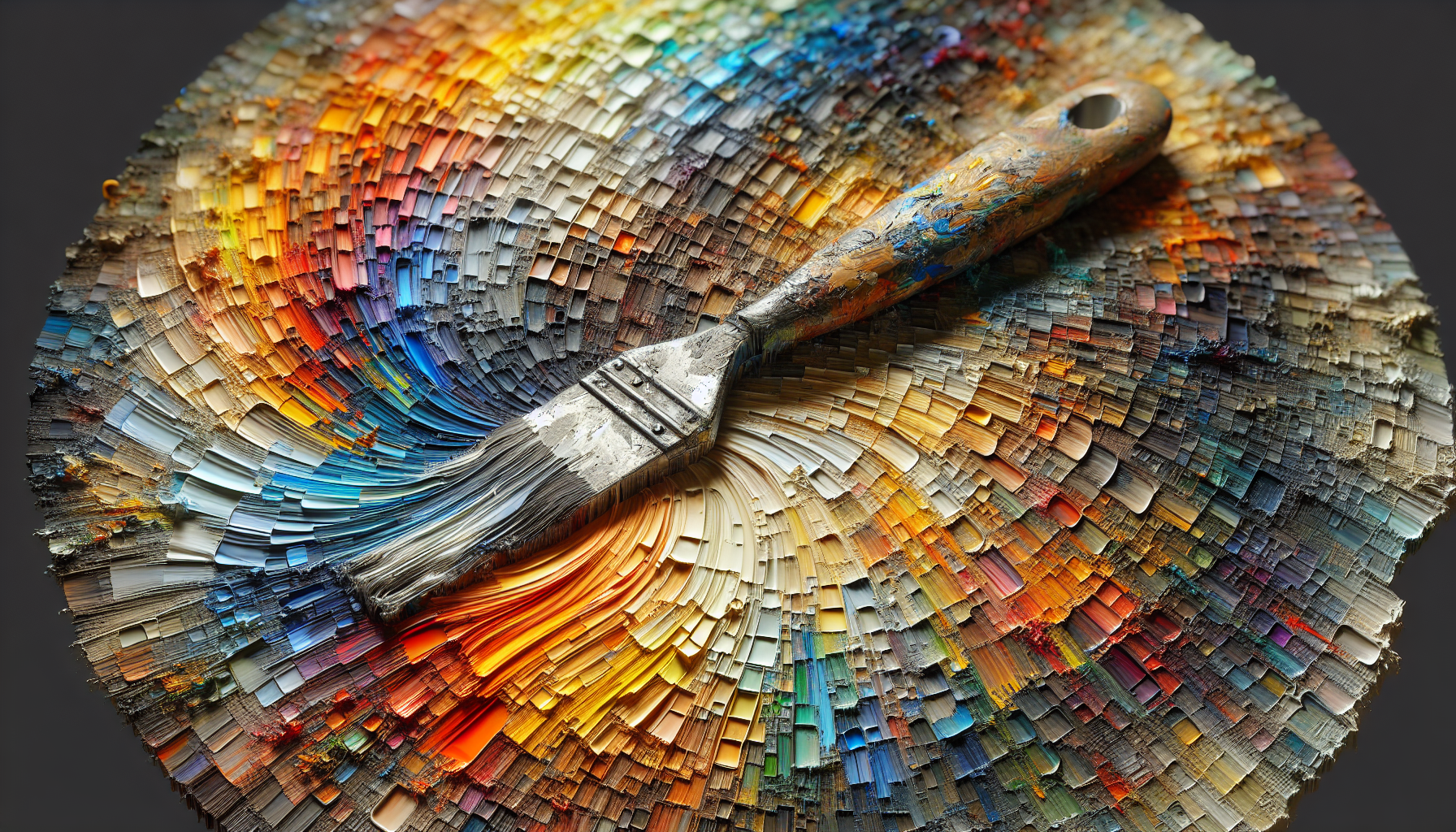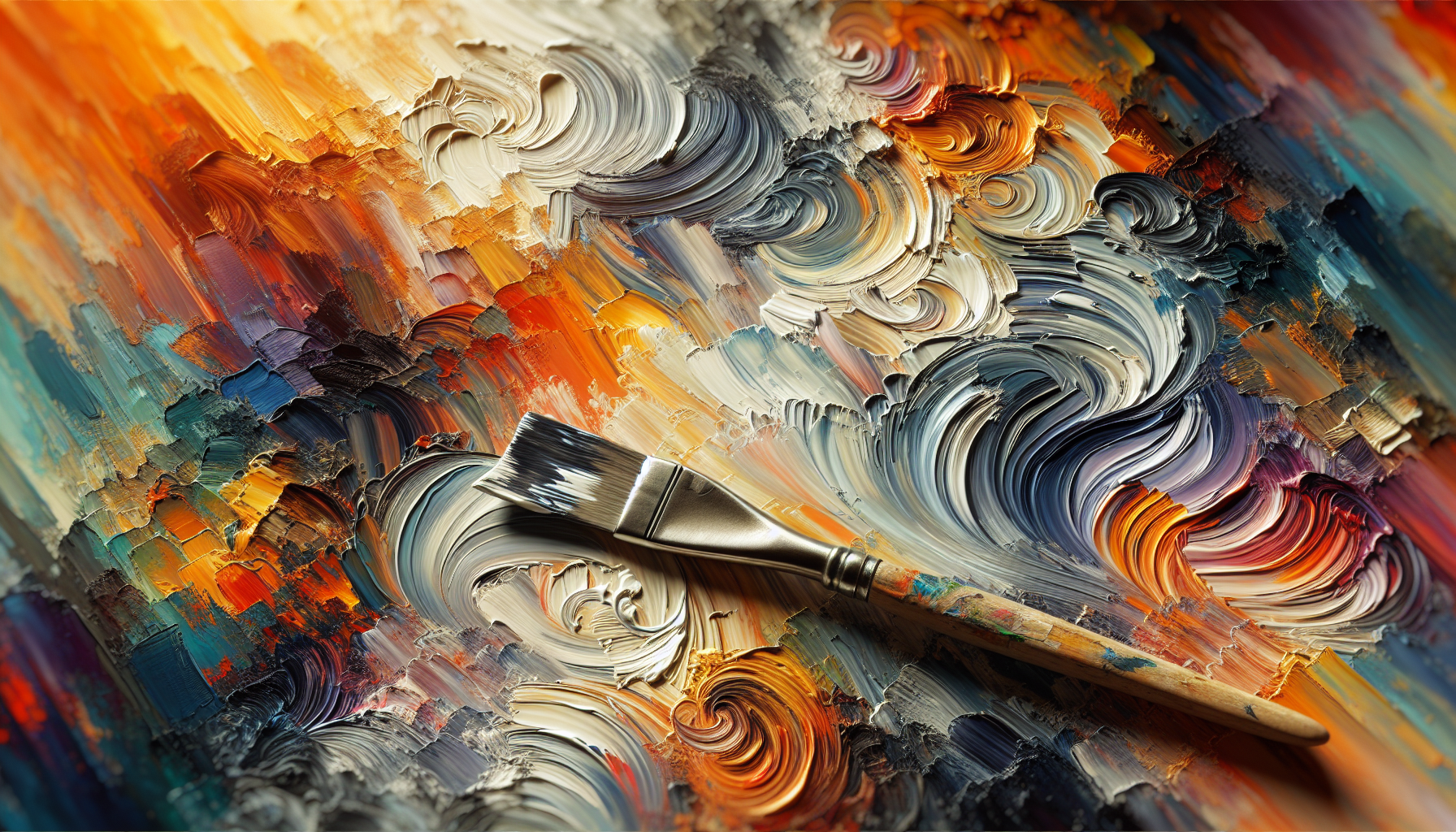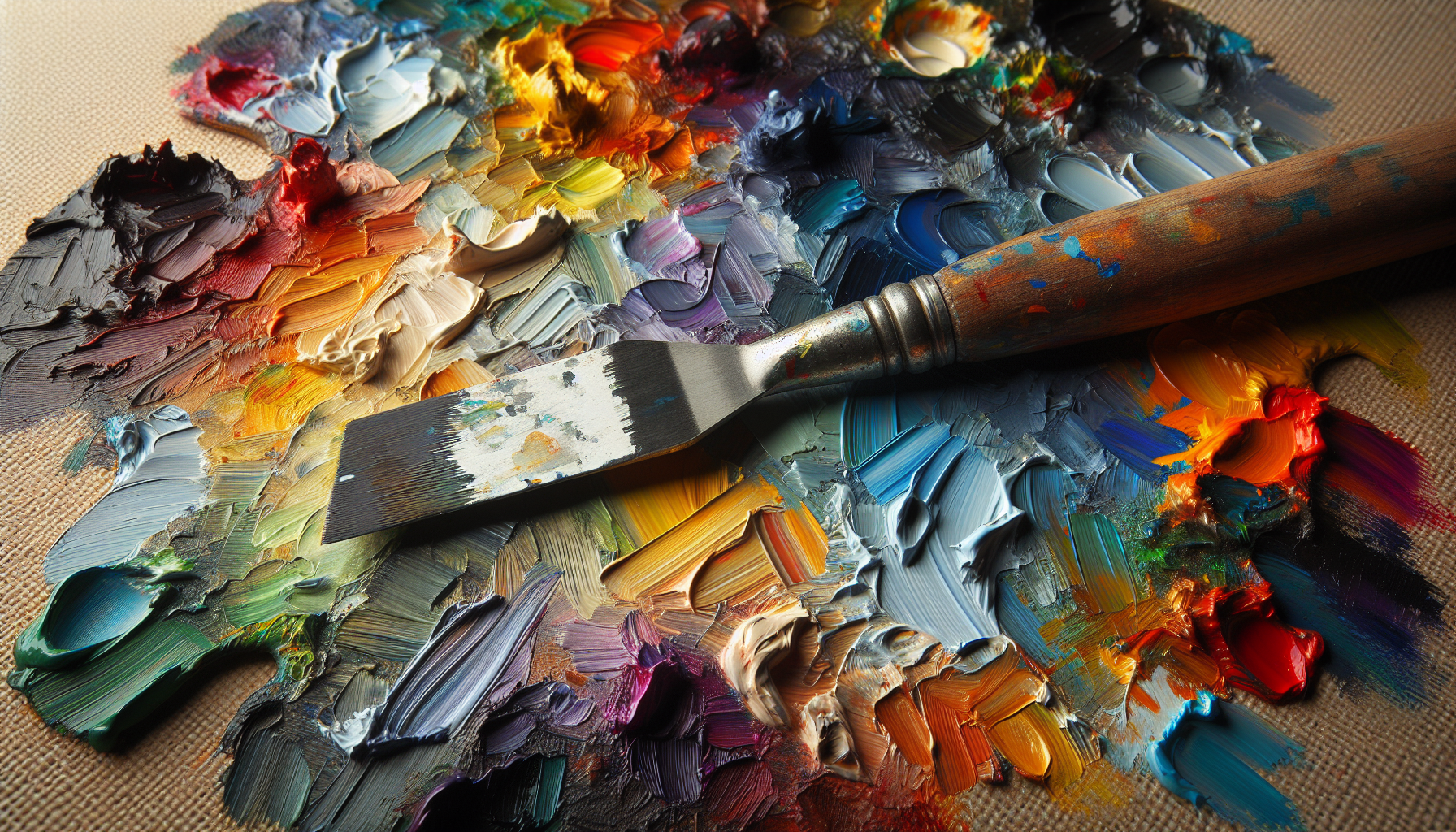Have you ever considered enhancing your oil painting techniques by incorporating the use of a palette knife? If you’re looking to add depth, texture, and dynamism to your artwork, this tool can be a game-changer. While some might feel apprehensive about straying from the familiarity of brushes, palette knives offer an entirely new dimension to oil painting. They can help you broaden your skill set, allowing you to explore the creation of vivid textures and bold, striking strokes.

Understanding the Palette Knife
What is a Palette Knife?
A palette knife is a versatile tool used by artists to mix colors on the palette and apply paint directly onto the canvas. Unlike brushes, palette knives do not absorb paint, ensuring that vivid colors remain vibrant when transferred to your artwork. They come in various sizes and shapes, each designed to achieve different effects. While initially intended for mixing paints, their use in direct application has become a staple among many artists seeking texture and boldness.
Types of Palette Knives
Palette knives come in various shapes, each serving a unique purpose. Here are a few common types you might encounter:
| Type | Description |
|---|---|
| Straight Edge | Features a straight, rectangular blade, ideal for mixing and scraping. |
| Angled Edge | Sports an offset handle with a flexible, angled blade, perfect for creating texture. |
| Diamond Shape | Has a pointed, diamond-like blade, which is excellent for fine details and lines. |
| Trowel | Features a small, trowel-like blade for more controlled strokes and layering. |
Understanding these types of knives and their specific uses helps you select the right one for each aspect of your painting, enhancing both precision and creativity.
Preparing to Paint
Choosing the Right Materials
Selecting suitable materials is crucial for a successful oil painting experience with a palette knife. Begin with choosing high-quality oils; their consistency plays a significant part in how they interact with the canvas and knife. Next, pick a sturdy canvas or board that can withstand the physical demands of knife work. Linen canvases are particularly popular due to their durability.
Setting Up Your Workspace
Creating an optimal workspace ensures that you have everything you need at your disposal and that you’re comfortable while working. Arrange your paints, knives, and canvas in a manner that is easily accessible. Ensure that your workspace is well-lit, which can be particularly beneficial for seeing the textures and nuances you’re creating. Spending a bit of time on the setup can dramatically improve your painting experience and output.
Basic Techniques for Beginners
Applying Paint with a Knife
Using a palette knife to apply paint involves a different approach compared to brushes. Start by loading your knife with a moderate amount of paint. Hold the knife close to the blade for better control, and use the blade’s flat side to apply paint onto the canvas. Experiment with different angles and pressure to see how they alter the paint application, creating varying textures and opacities.
Mixing Colors on the Palette
Palette knives excel at mixing colors on the palette. Their flat, non-absorbent nature allows you to thoroughly blend colors without altering their brightness or consistency. To mix colors, use a scraping motion against the palette surface. This method not only achieves a smooth color transition but also prevents wasting paint.
Advanced Techniques
Creating Texture
Textures drive the appeal of any palette knife painting. By adjusting pressure and using different parts of the knife, you can develop textures that transform your composition. Consider using the tip for fine lines, the flat edge for broad, sweeping textures, and the blade’s side to create linear patterns. Practice blending these elements seamlessly into your work to achieve intricate, tactile effects.
Layering Paint
Layering is another fundamental technique that enhances depth and complexity in your oil painting. Begin with thinner, lighter toned layers; gradually build thicker, darker layers using the palette knife. This process, known as “impasto,” allows the development of volumetric compositions that carry both visual and tactile appeal. Ensure each layer is partially dry before adding the next to maintain the structural integrity of your textures.

Troubleshooting Common Challenges
Managing Paint Consistency
Finding the right consistency of paint when using a palette knife can be challenging but is achievable with practice. Oil paint that is too thick can be challenging to manipulate, while paint that is too thin may run or not hold the texture. Modify the consistency by adding a small amount of linseed oil to thin the paint or leaving it to oxidize if the paint is too fluid. Mastering this balance will avoid unwanted streaks or muddiness in your paintings.
Avoiding Unwanted Texture
Sometimes, unwanted textures can arise when working rapidly or applying too much pressure. If this happens, scrape off the excess paint gently and try reapplying with a lighter touch. Occasionally pause to assess your progress, adjusting the pressure or angle of your knife as needed to maintain the desired texture palette.
Enhancing Your Artistic Touch
Experimenting with Techniques
Developing your unique style involves more than mastering techniques—it’s about experimenting. Try various combinations of knives and pressure, practicing on smaller canvases to understand their effects. By experimenting boldly, you’ll begin to develop a signature style that is distinctly yours, characterized by the unique textural fingerprints left by your palette knife.
Incorporating Brushes for Detail
While palette knives are exceptional for texture and big strokes, incorporating brushes can be beneficial for adding detail or smoothing areas. Use fine brushes to add intricate detail to your painting once the larger forms are established. Balancing the robust textures of the knife with the precision of the brush can create a compelling contrast that adds nuance to your work.
Conclusion: Bringing It All Together
Using a palette knife in oil painting unlocks a multitude of creative possibilities, allowing you to introduce texture, dimension, and boldness into your artwork. By understanding the types and uses of palette knives, preparing adequately, and mastering both basic and advanced techniques, you can greatly enhance your artistic practice. Remember to continually experiment and practice—these are key to developing your unique style and refining your technique. With dedication, you’ll discover the endless possibilities that palette knives offer, adding richness and depth to your artistic journey.


